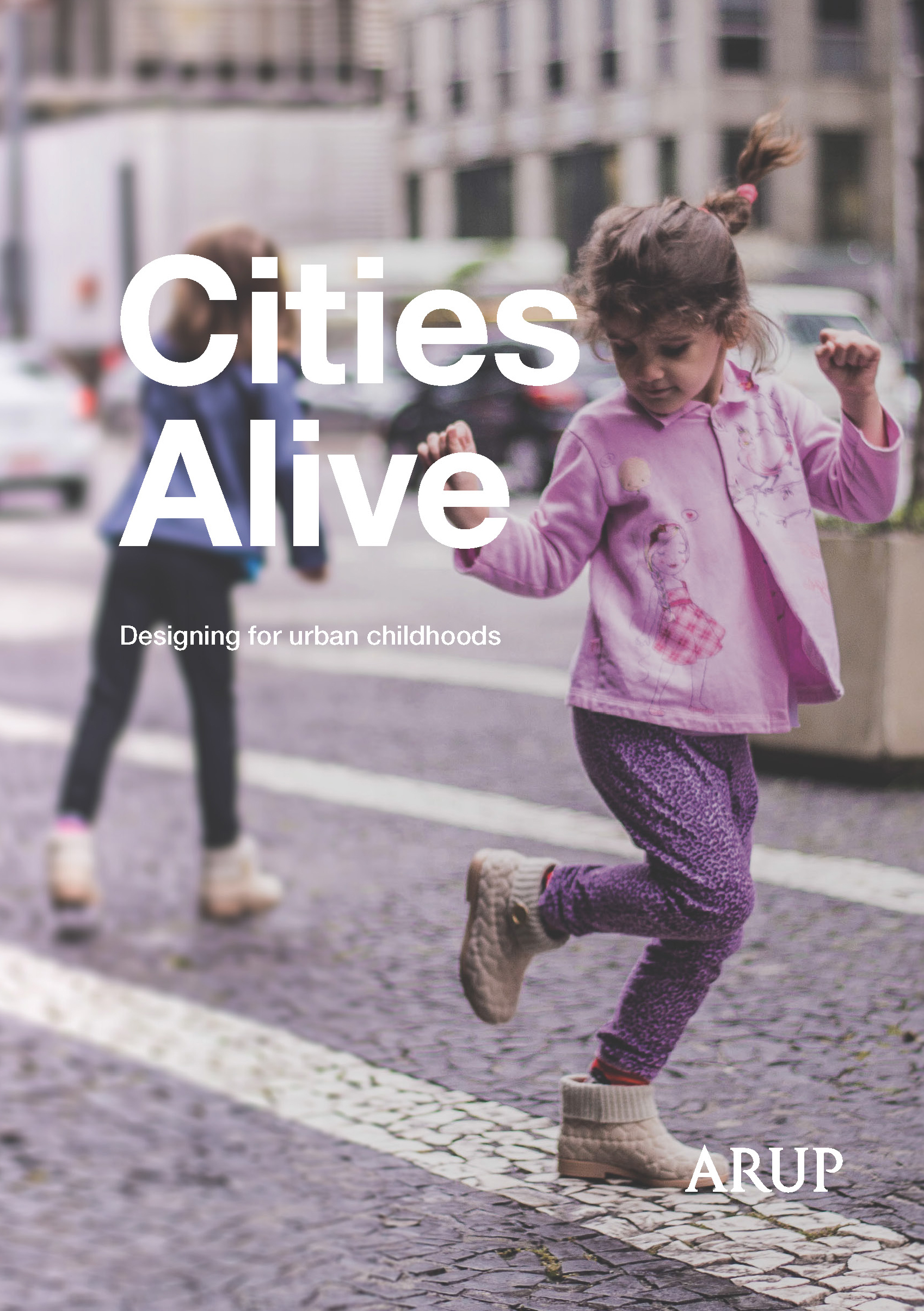
Child friendly cities support economic performance, says new report by Arup
Children who are seen and heard in UK cities are a good indicator of economic health, say the international built environment specialists, Arup, who today launch their new report on a child friendly approach to planning, design and city management.
City leaders should pay attention to the number of children playing outside with their bikes this Christmas. A new report by Arup indicates that becoming more child-friendly can improve a city’s economic performance and its ability to attract and retain a skilled workforce.
The report’s authors argue that cities must address the needs of children, or risk suffering a ‘hollowing out effect’ that impacts economic and cultural life as families move away. Children’s ability to get around independently, the time they spend playing outdoors and their connection to nature are all strong indicators of how a city is performing, not just for children but for all city dwellers.
Air pollution, traffic, crime and high-rise living are among the factors making cities child-unfriendly, restricting children’s independence and ability to play. The stresses of urban life and declining opportunities for play are significant contributing factors to the rise in childhood obesity and child mental health problems.
Proven interventions
Property developers, designers and civic leaders are encouraged to take a child-friendly approach to planning, designing and managing cities, moving beyond simply providing playgrounds and drawing inspiration from proven interventions from around the world, such as:
Play streets
Independent mobility leads to higher levels of physical activity, sociability and mental wellbeing. Yet fears for children’s safety means that from 1971 to 1990, the number of UK children walking to school unsupervised has decreased from 80% down to just 9%. Temporarily closing streets to traffic would encourage people of all ages to be more active, while reducing air pollution and traffic danger. The City of Bogota is taking a lead in this, regularly closing city streets to cars, while Bristol, London, Adelaide, New York and Toronto are all forging partnerships between residents, local agencies and municipalities to take ‘play street’ schemes forward.
Intergenerational spaces
Where children go, adults follow. The creation of active space can benefit the health and cohesion of whole communities. From early on King’s Cross Central incorporated playful interventions as a means of urban regeneration and to create a fun and vibrant destination for all ages. This involved incorporating arts programming, urban gardens and a temporary open-air swimming pond to generate outdoor activity.
Traffic measures
In 2015, road traffic injury was the leading cause of death among 10-19 year olds globally. Increasing drivers’ awareness of pedestrians and street activities is paramount. In South Korea, the School Zone Improvement Project is doing just this, creating safe routes between children’s homes and frequently used facilities. A month-long experiment changed an inner city neighbourhood of Suwon, South Korea into a car-free zone, which proved successful when residents voted to impose parking controls, speeding restrictions and car-free weekends beyond the pilot project.
Wild spaces
A connection with the natural world is associated with a range of physical and mental health benefits, including lower rates of obesity, depression, stress and attention disorders. Creating better ‘wild spaces’ in cities improves access to these areas, while preventing disused canal sides and parks becoming hotbeds for crime. Residents of Salinas in California saw this when the local community restored the 64-acre Natividad Creek Park, turning it into a refuge for young people from gangs and violence.
We are at a critical moment in the evolution of cities and how we treat our children today is how we will be remembered in the future.
– Jerome Frost, Arup
Jerome Frost, Arup’s director and global planning and cities leader said: “This report highlights the opportunity to create healthier, more inclusive, resilient and competitive cities for people of all ages by taking a child-friendly approach to cities. We are at a critical moment in the evolution of cities and how we treat our children today is how we will be remembered in the future. Harnessing political will, testing interventions through pilots and being creative in using the evidence, resources and capabilities available will help us make better choices for child-friendly environments.”
Source: Arup media release
Photo: Arup
 Arup is ‘the creative force at the heart of many of the world’s most prominent projects in the built environment and across industry. From 92 offices in 40 countries our 13,000 planners, designers, engineers and consultants deliver innovative projects across the world with creativity and passion’.
Arup is ‘the creative force at the heart of many of the world’s most prominent projects in the built environment and across industry. From 92 offices in 40 countries our 13,000 planners, designers, engineers and consultants deliver innovative projects across the world with creativity and passion’.
Arup’s report, Cities Alive: Designing for Urban Childhoods can be downloaded here




